Vertical garden ideas: 12 ways to maximize plant space
Limited outdoor space? Vertical garden ideas will help you to pack in more plant interest no matter the size of your garden
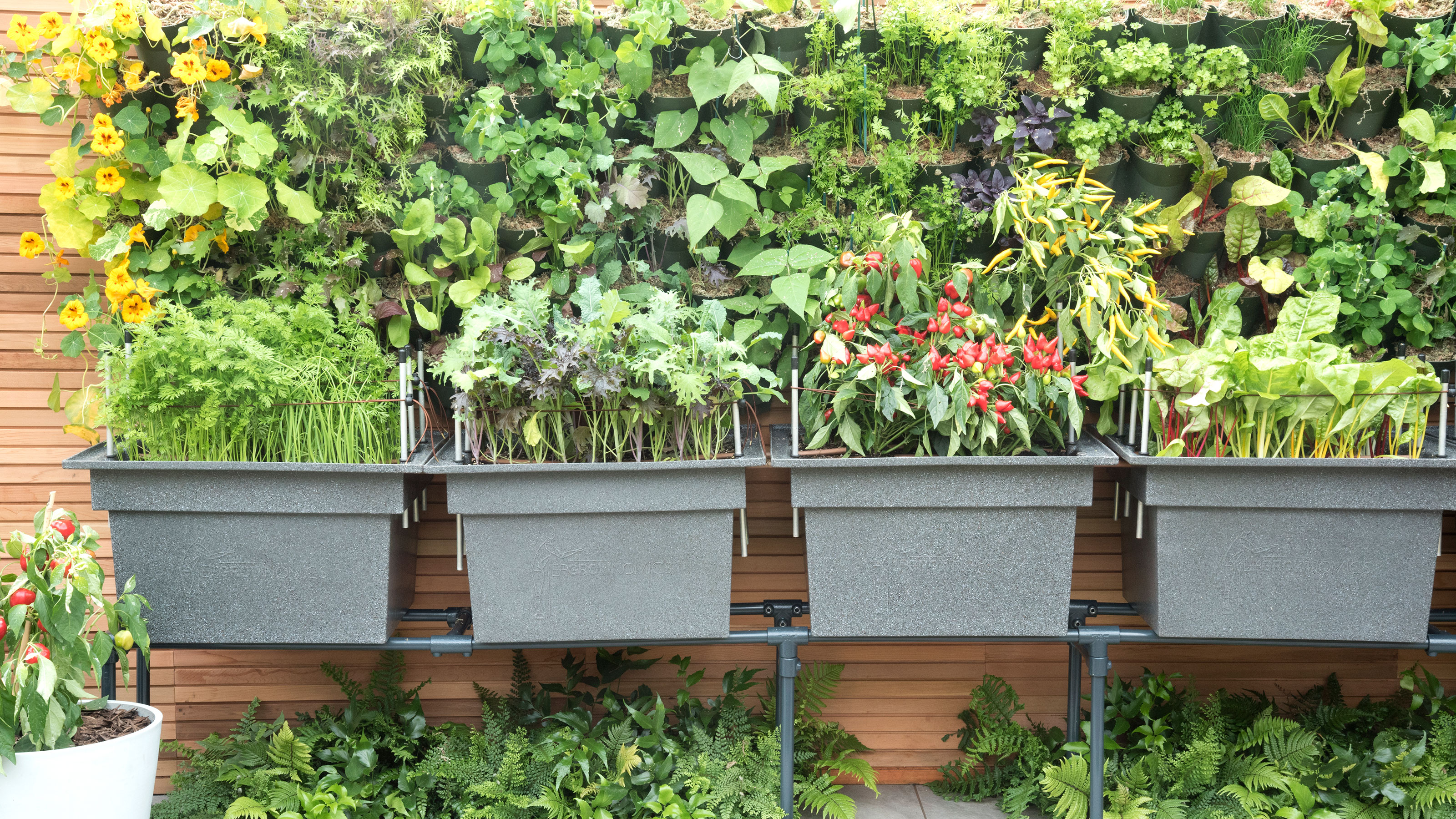

Our favorite vertical garden ideas are ideal for packing plant interest into a small space. This trend is particularly popular in urban spaces, where people may have little more than a balcony. Making use of wall space means you can create a jungle oasis without cutting into valuable floor space.
Having a small space to work with doesn't mean you have to limit your design aspirations either. You can create anything from custom built modular systems with automatic irrigation systems, to DIY pallet planters mounted on a wall. It really depends on the needs of your space and your budget.
Vertical gardens are becoming increasingly popular as space-starved gardeners look for clever small garden ideas to make help them make the most of their space. 'Creating a vertical garden can be a great way to create more space while showcasing your plants in a new and artful way,' says Luke Dejahang, CEO of Crown Pavillions. 'As this trend becomes more popular, we’ve seen people transform their garden rooms and gazebos into elevated spaces using vertical design gardening techniques.'
Bring interest to a small space with vertical garden ideas
The growing trend for vertical garden ideas can work well in all sorts of spaces, but it's particularly apt for smaller urban plots.
According to Samantha Jones, gardening expert at MyJobQuote: 'They are also ideal for anyone looking to create a more private outdoor space, as a vertical garden is perfect for providing an adequate screen around your garden.'
Get inspired to create a living wall with our favorite planting schemes.
1. Make considered plant choices
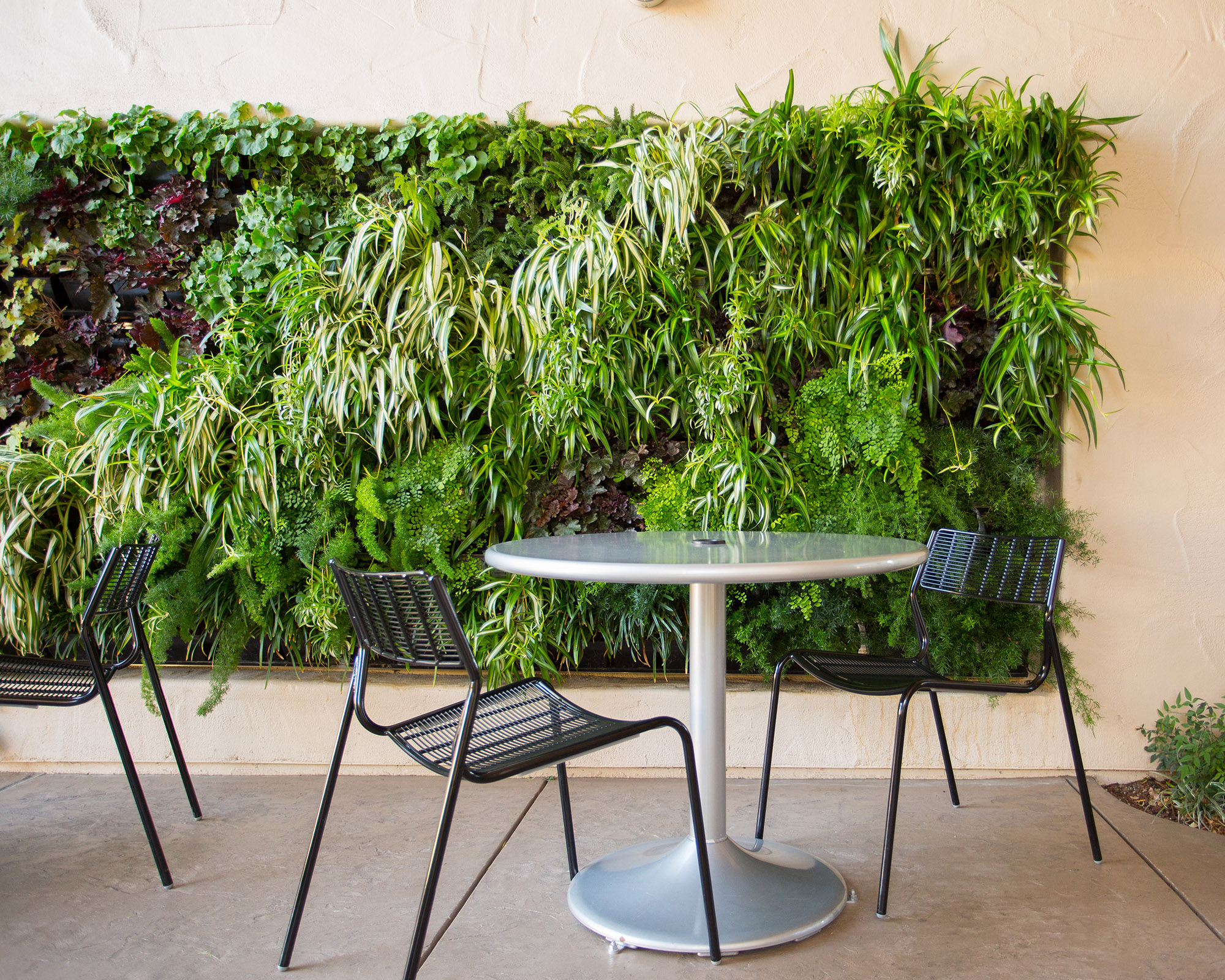
Before you plan your vertical garden ideas you should first consider which type of plants will suit your space and which may require additional care. After all, your small patio won’t feel quite so idyllic if all your plants are in poor health, so it’s always worth thinking about how best to take care of your plants.
'Getting enough sunlight is often the biggest issue gardeners face,' say the garden experts at The Greenhouse People. 'Those with north-facing walls should opt for hardier plants that don’t mind a bit of shade, like fuchsia, hardy geraniums or ferns. Alternatively, if you’re looking to create an aromatic herb wall, opt for shade-loving herbs such as mint, parsley or chives.'
'You also need to make sure plants are getting the correct amount of water, so if you’re low on time, consider investing in an automatic irrigation system to ensure your plants are in perfect health.'
And if you live in a busy area, you may find covering walls or fences with plants can not only make a small garden look bigger but also reduce noise pollution, helping you achieve a tranquil space.
2. Pleach a tree for privacy
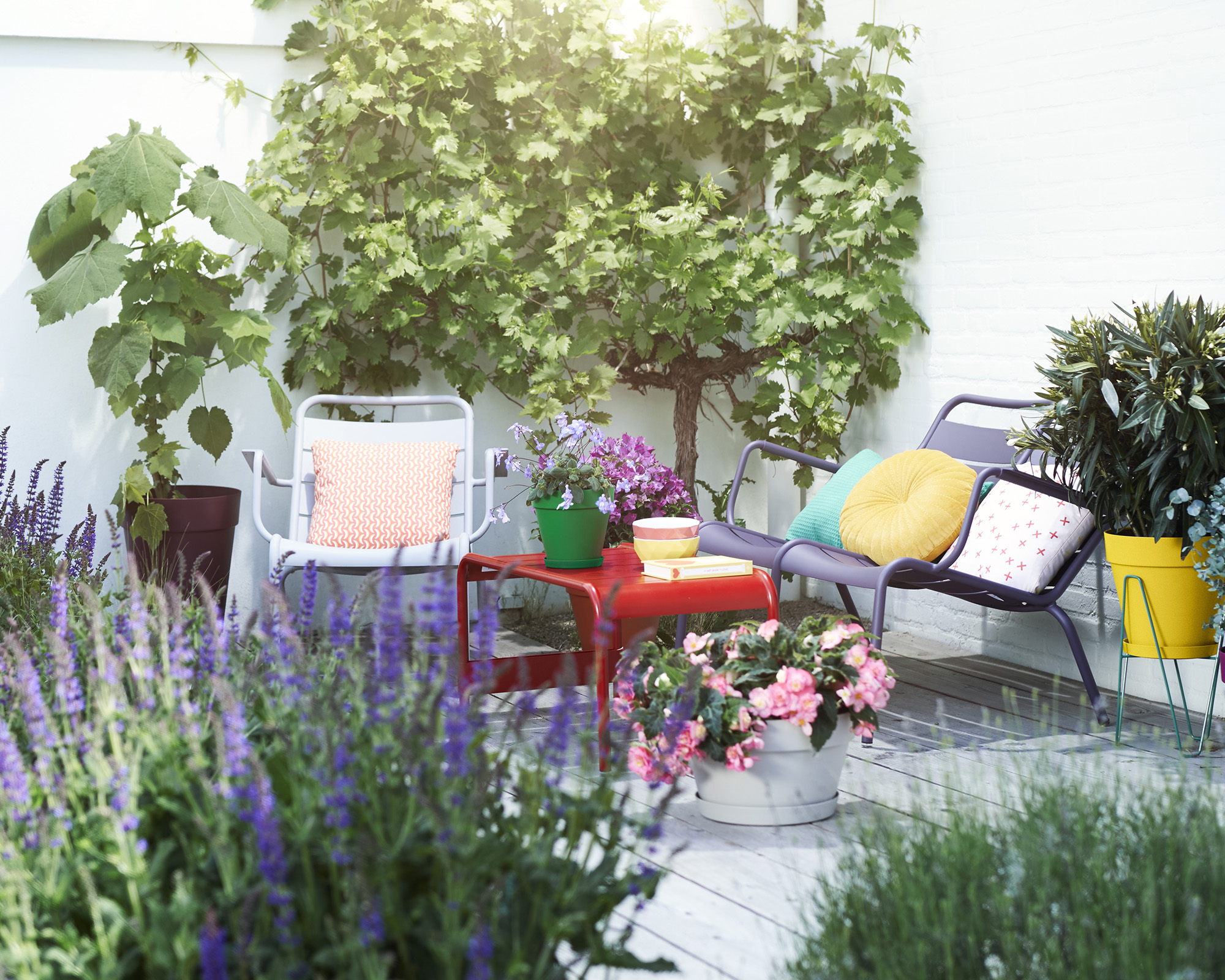
Trees can be tricky to fit into a small space but the method known as pleaching also referred to as 'hedges on stilts' mean that you can train your trees to give vertical interest in a uniform and controlled way. It's an ideal method for creating privacy in an overlooked courtyard garden.
Amateur Gardening expert Martin Cox says: 'Standard pleached trees are trained on narrow trellis frames above a clear stem that can measure anywhere from 4ft (1.2m) to 6ft (2m) in height. They’re perfect to extend screening above a brick wall. The area underneath can then be under-planted, left open or used to display pots, ornaments or anything else you fancy.'
Among the best trees for small gardens which work for stilt hedging are Japanese privet (Ligustrum japonicum), Photinia x fraseri ‘Red Robin’ and cherry laurel (Prunus laurocerasus ‘Latifolia’) – these evergreens will provide maximum privacy all year round. They may be deciduous, but hornbeam (Carpinus betulus) and beech (Fagus sylvatica ‘Purpurea’) are worth considering too as they hold onto their leaves well during winter.
In paved gardens or courtyards, an alternative option is to go for one of the best trees to grow in pots and nurture your favorite in a container instead.
3. Combine individual planters for a green wall
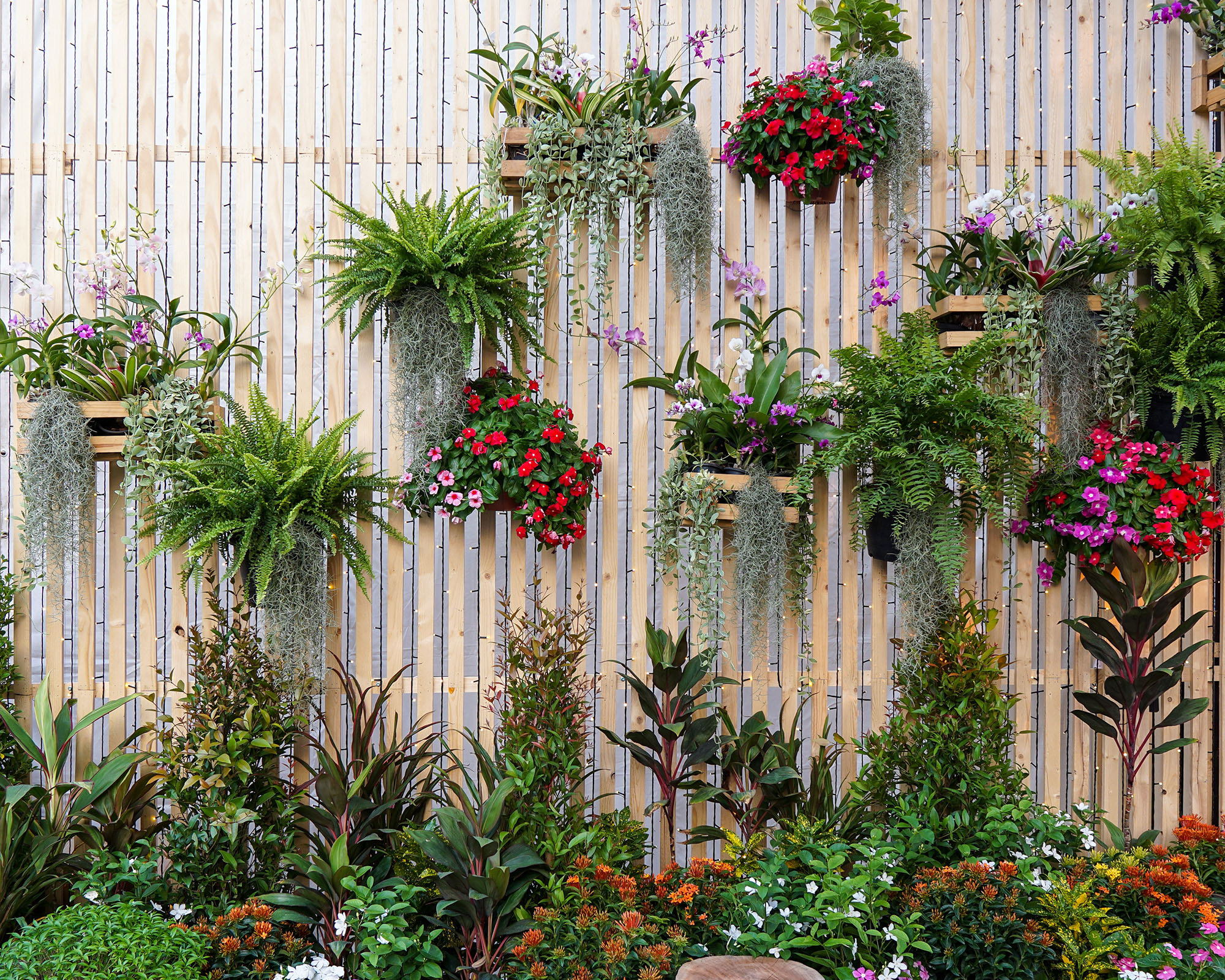
For those who want to create a living wall effect but perhaps lack the funds to install a complex irrigated system, attaching a number of containers and hanging baskets onto a garden fence is an easy hack in a courtyard or patio.
'Particularly for smaller garden areas, such as balcony gardens, wall planters and hanging baskets are all great options for the gardener that doesn’t want to compromise on social space,' say planting experts at The Greenhouse People.
'By raising plants to a higher level, you not only maximize your useable floor space, but the varying levels will draw the eye upwards, creating different focal points that make your garden space look instantly more visually interesting.'
4. Create a tropical oasis indoors
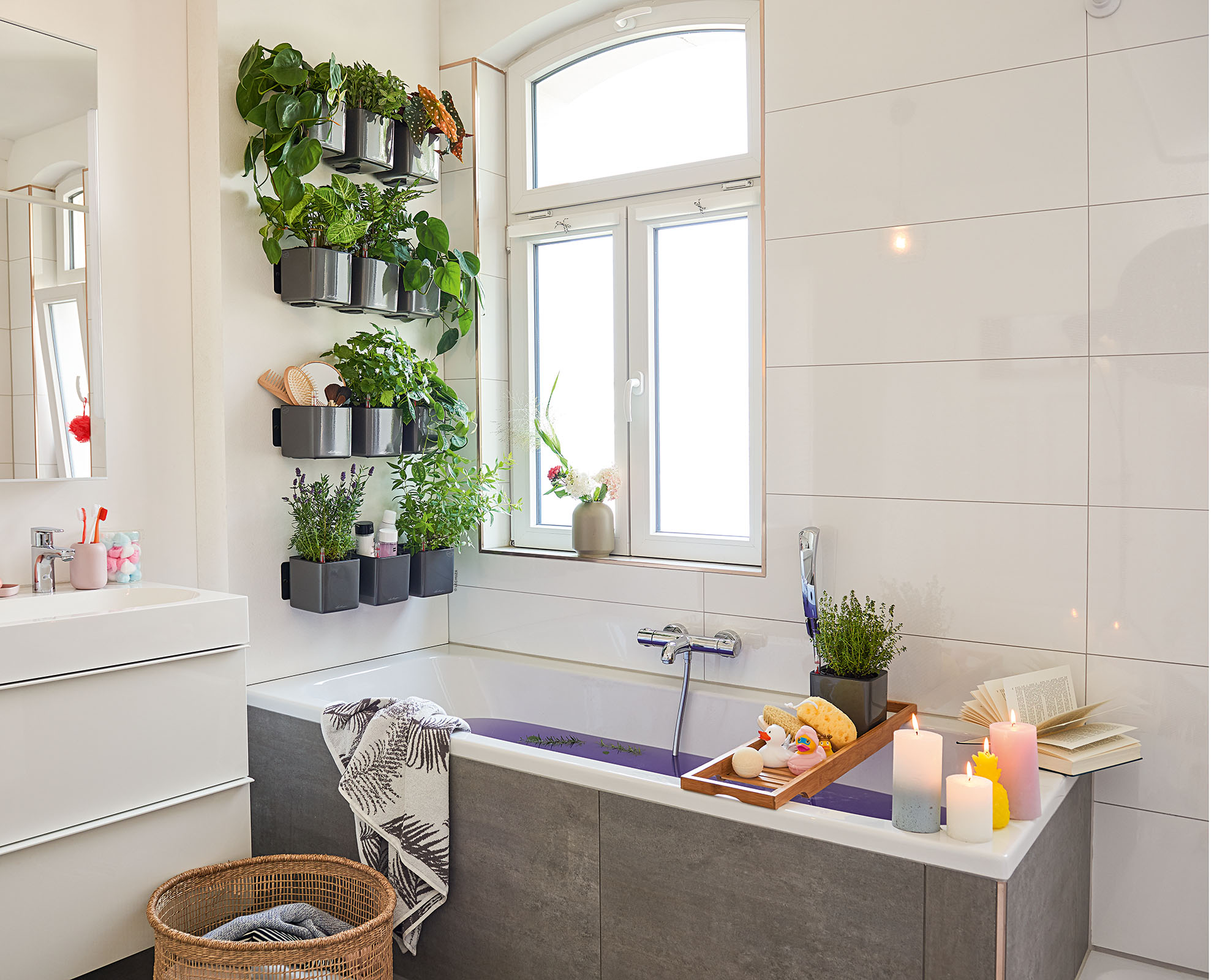
It's not just outside where vertical garden ideas can be put into practise. The best indoor plants can be used in the same way to create interest inside the home. 'Living walls are brilliant for those who lack surface space but still want to keep plants, as well as being very aesthetically pleasing and a means to achieve relaxing and healthy, high oxygen environments or – on the other hand – for achieving the trendy "urban jungle" look at home,' says Arvin Bhudia, Sales Director at Lechuza.
Some of the best plants for bathrooms include ferns, which come in many varieties and are lush looking, plus they love the misty humidity and don’t necessarily need much daylight to thrive. Alocasia, Pothos varieties, Aloe and Calatheas can all work brilliantly in this setting, whilst spider plants are hardy and can do well without much natural light.
5. Use wooden pallets as a planter system
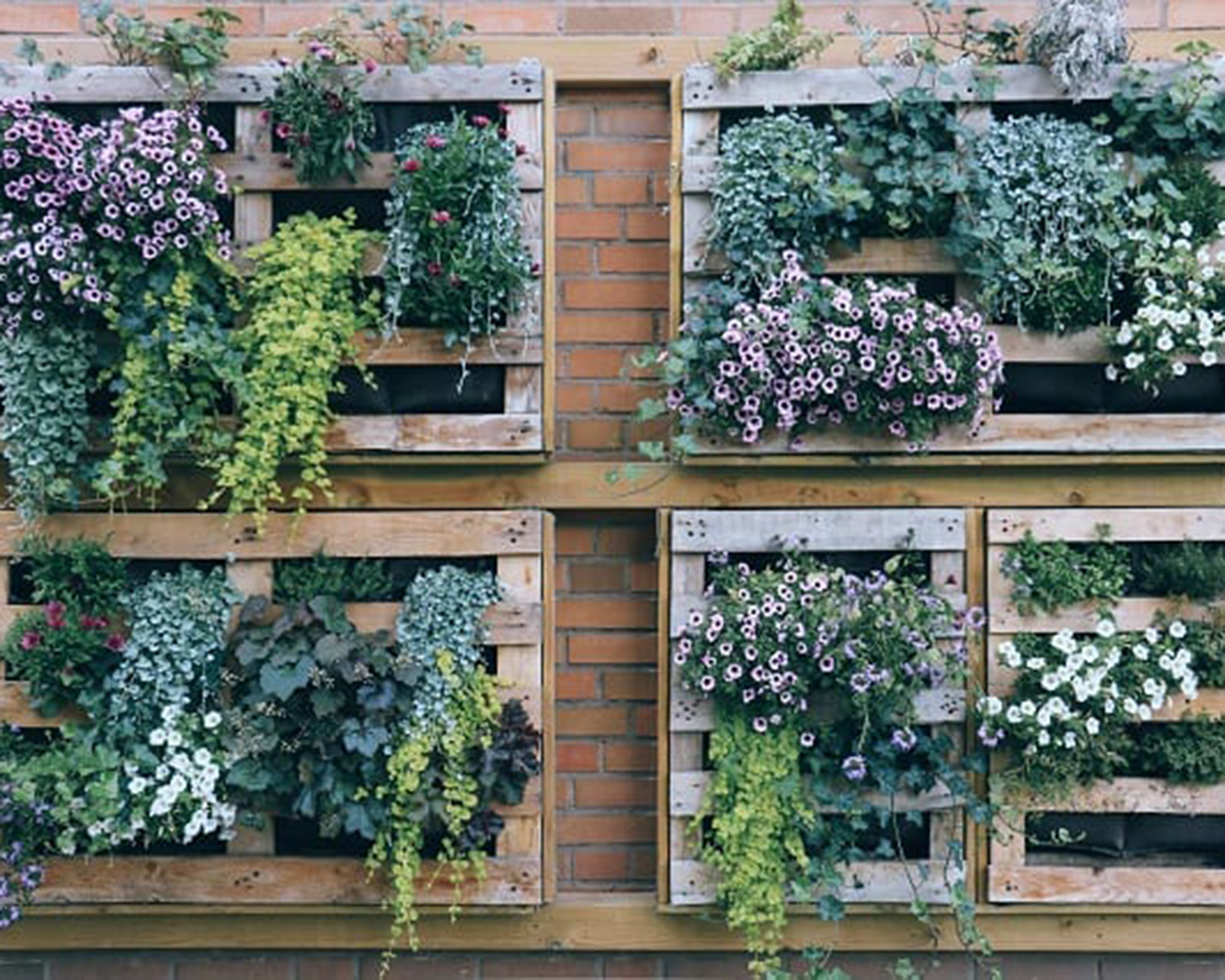
We love a pallet here at Gardeningetc. They can often be sourced for free from local businesses and can be used for incredible pallet furniture ideas as well a plethora of outdoor upcycling projects, including this nifty wall-mounted planting system.
Install planting pockets on the reverse side of your pallets and pack in trailing plants like ivy and petunia. According to Mark Want, gardening expert at stairlift and home lift company Stannah you might want to consider a self watering system too. 'If you love the idea of gardening, but don’t have the luxury of time to maintain it or would like to save water, then a self-watering system may be for you. Here’s where it gets a little technical. You need an irrigation system (for example, a leaky hose or small irrigation pipes and nozzles that drip-feed and nourish your plants) plus a water collecting reservoir at the bottom.
'A solar-powered pump allows you to set a timer for when your plants get watered during the day – you can even add liquid feed! As the pump starts to work, just the right amount of water and feed will be forced through the pipes and onto the soil or coir. But rest assured, a good old-fashioned long-spout watering can or a hose with an attachment on the end can work just as well.'
6. Hang pots from a balcony railing
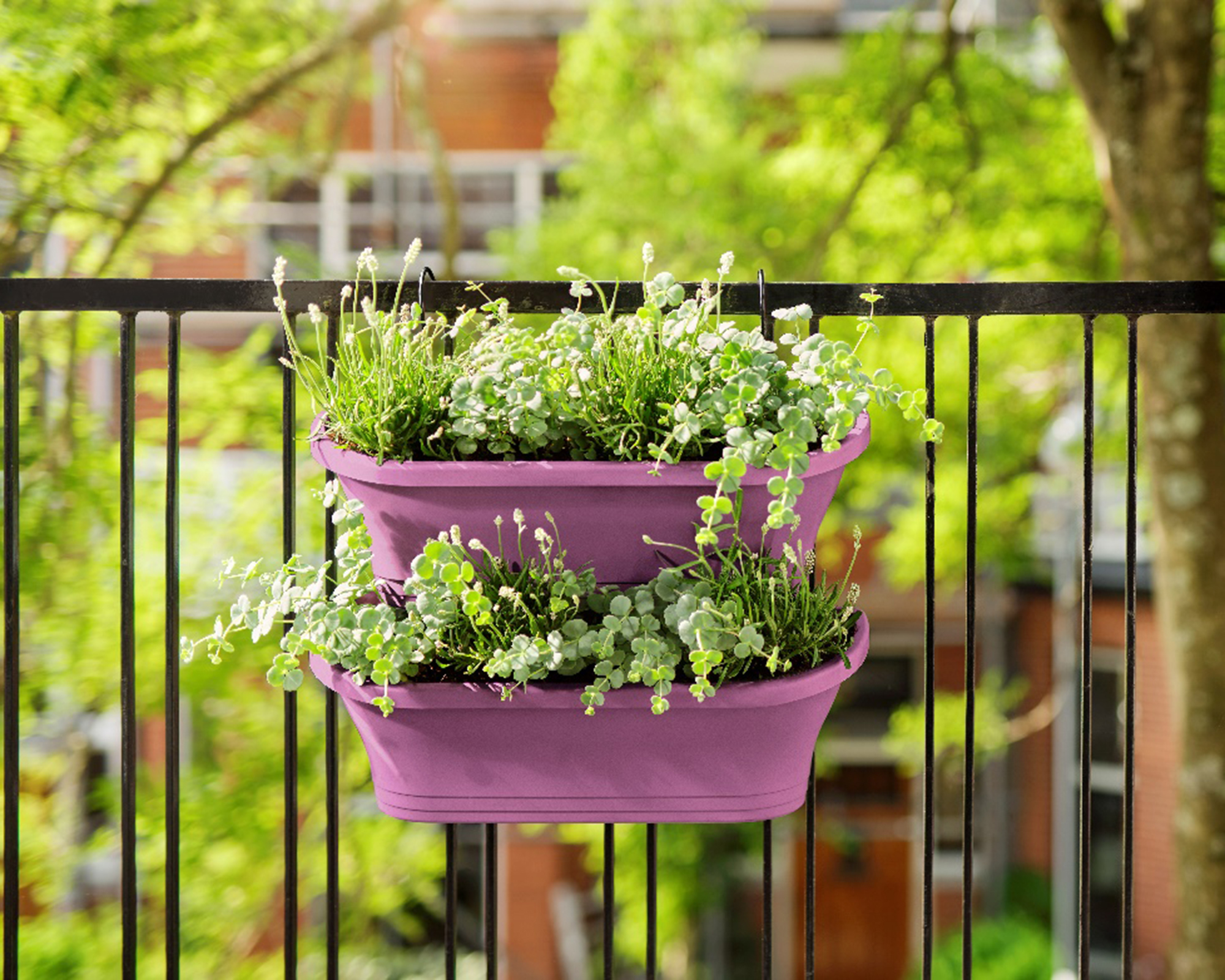
For those with limited ground space, the best thing to do is to go up! Vertical garden ideas can transform small balconies and patios into a lush, green oasis, enveloping outdoor space in foliage and blocking out pollution and noise.
But this becomes tricky in a smaller space so a set of simple stackable planters can be a lifeline. They allow you to create a living wall aesthetic without a complex installation process. They can be easily attached to railings on balconies to soften the hard lines. Plant fragrant plants like lavender which will also provide food for pollinators, as well as being a scent-sational addition for you.
7. Keep it simple with single pots
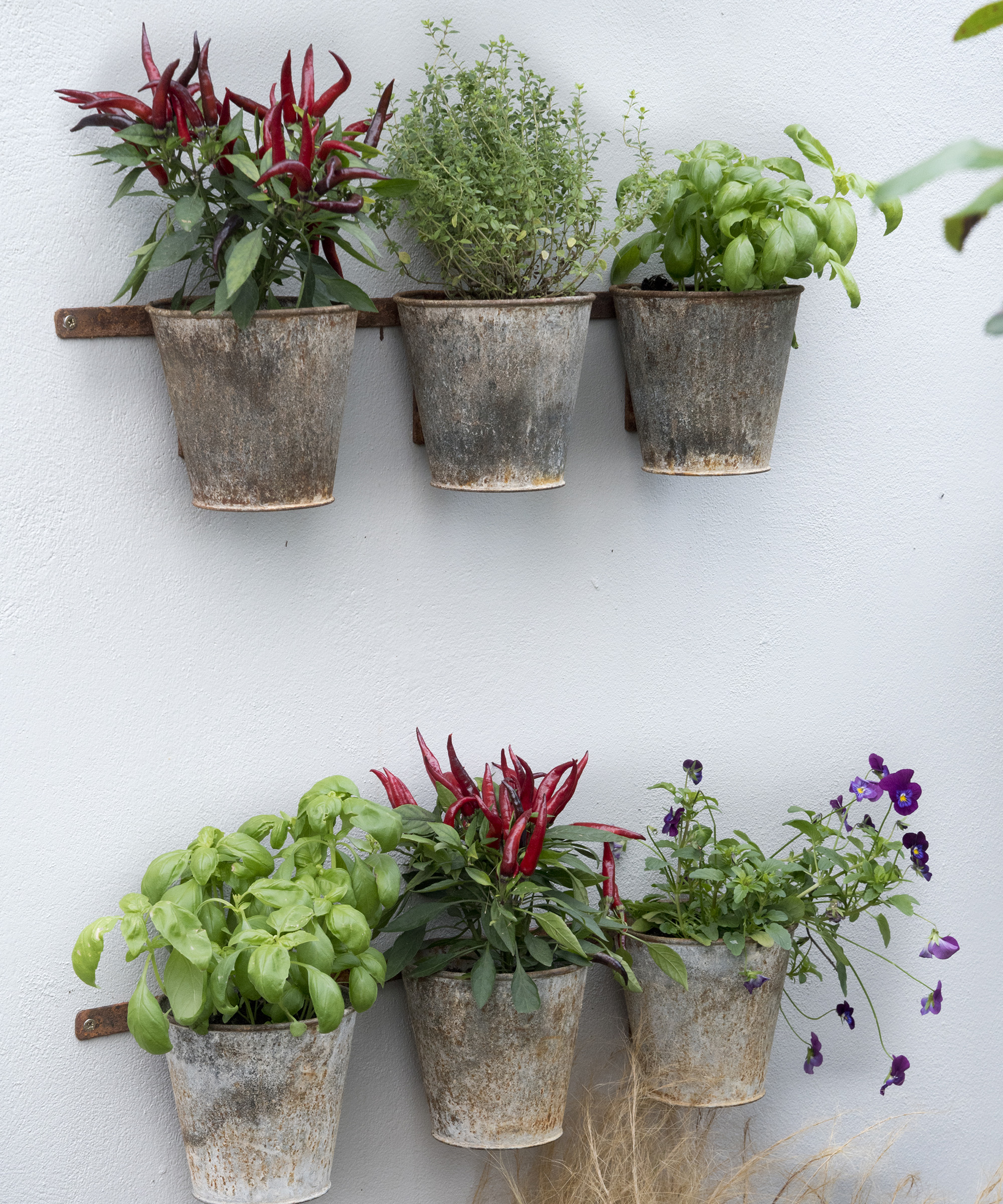
Vertical garden ideas can come in all shapes and sizes. Even if it's just a group of single pots mounted on a wall. Sometimes a large garden wall can feel a bit empty and imposing, so try breaking up the space with wall-mounted pots instead.
Replace them with new plants as the season changes to give different color interest. Alternatively, stick with an evergreen and keep it watered all year round. Or if you're a fan of edible produce try pots of chilli and herbs like basil.
8. Have a trellis planter for climbers
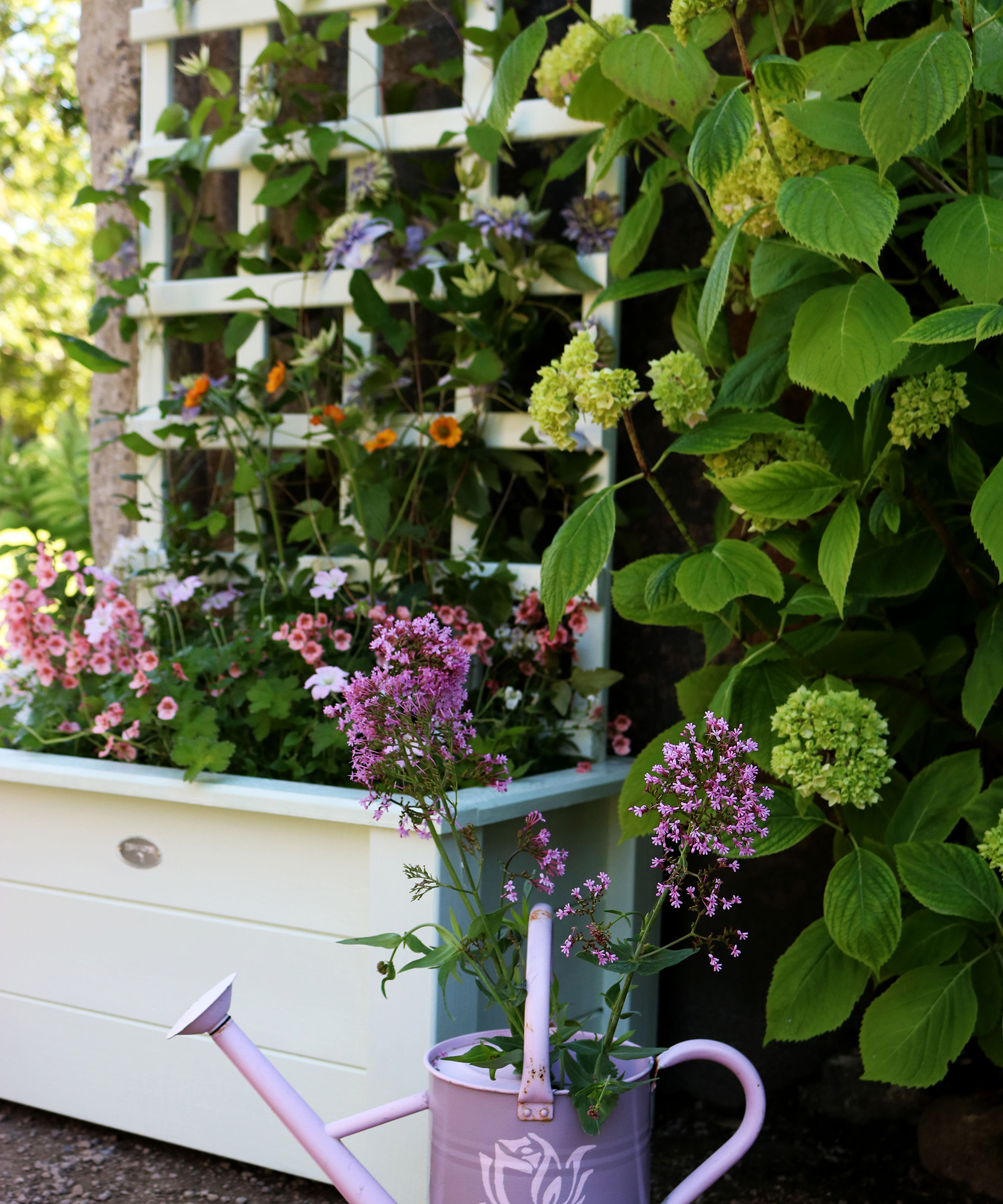
A medium-sized trellis planter is an ideal quick-fix vertical garden idea. These will be readily available online or at garden centers all year round. They can be pushed up against a sunny wall or fence and used to grow veg. Green beans or tomatoes would go at the back of your planter so they could be trained up the trellis panel. The front could have edible flowers like nasturtium which are good options for companion planting to boost your crops as well as adding floral interest.
Alternatively, go with a purely floral feast with clematis and other cottage garden plants like delphiniums and calendula.
9. Go for trellised fence panels
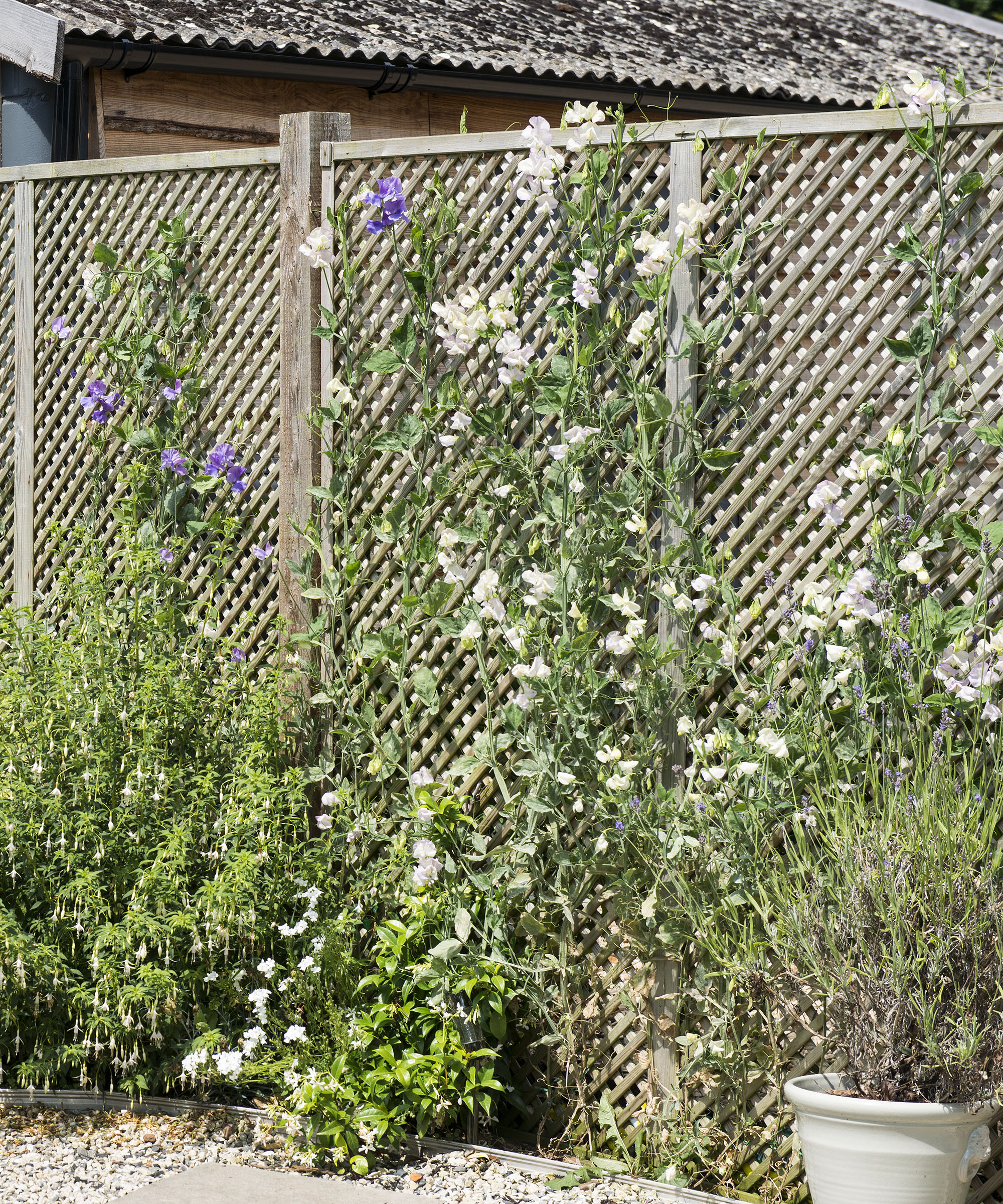
If you're in the market for a new garden fence then you might want to consider going for a trellis panel. Not only are these great for letting light to pass through as well as insects and bees, but it means that you're ready to go with planting climbers in your flowerbeds.
Depending on the light in your garden you might choose a camellia for a dry shady spot or a tropical passion flower for a hot and sunny, south facing garden.
10. Create a living wall of succulents
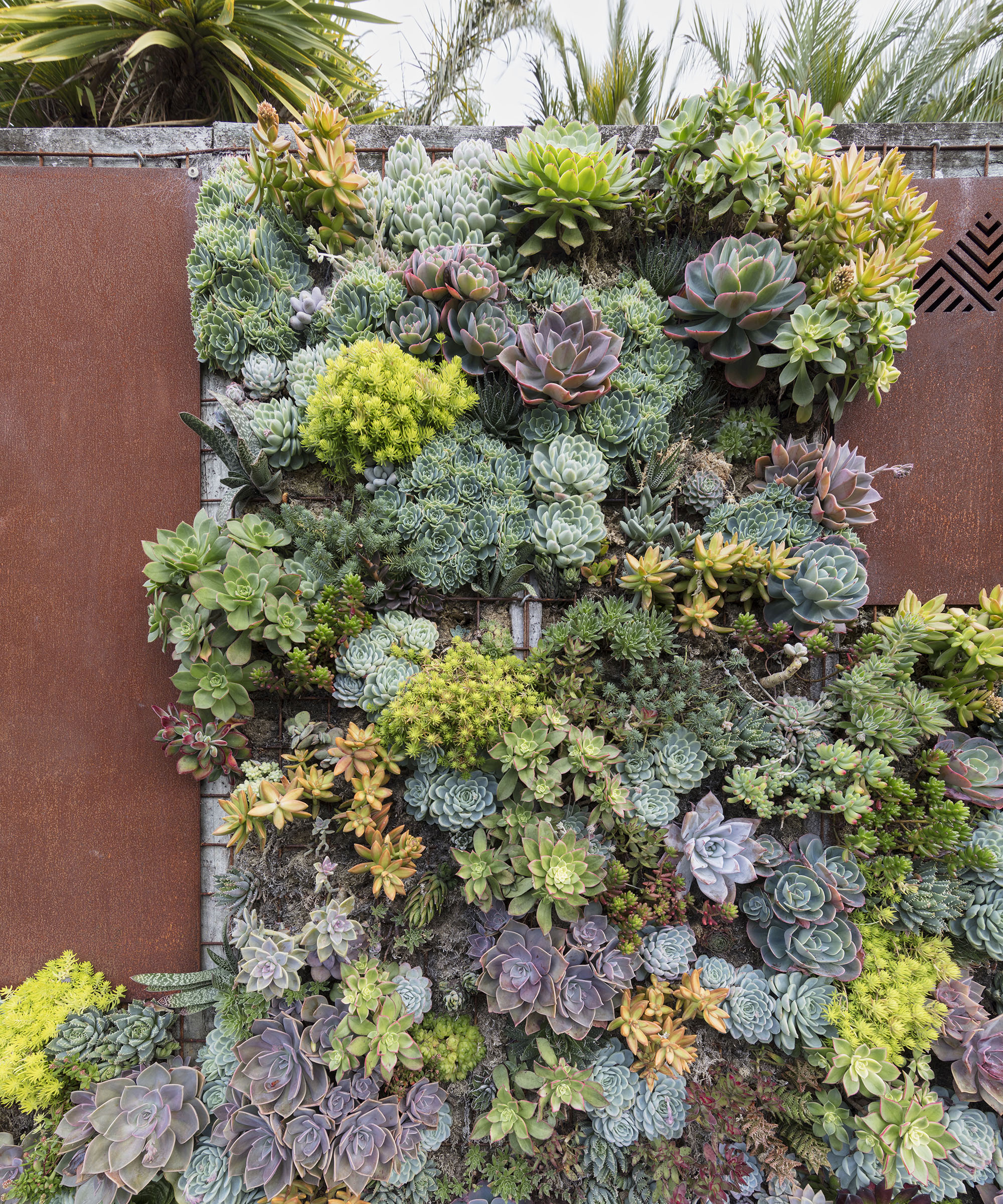
Succulents are still having a trend moment, and there's no sign of that coming to an end any time soon. And they're ideal if you're looking for a low maintenance living wall. Other types of living walls require good irrigation and plenty of it. Whereas succulents are some of the best drought tolerant plants and require far less watering than other types of plants.
They will still need watering every now and then, particularly if they're not growing in the ground. They make the ideal plants to pack into frame as they have shallow root systems which don't take up much space beneath the soil surface.
To create vertical succulent garden ideas, use chicken wire over a base of compost and slot in your succulents. It will take a while for them to grow and cover the whole vertical area so in the meantime use moss to cover up the chicken wire. New plants can be added over time.
If you have a stone wall or similar it is possible to just slot succulent cuttings into the cracks and more often than not they will take root and thrive.
11. Put a vertical plant display on your porch
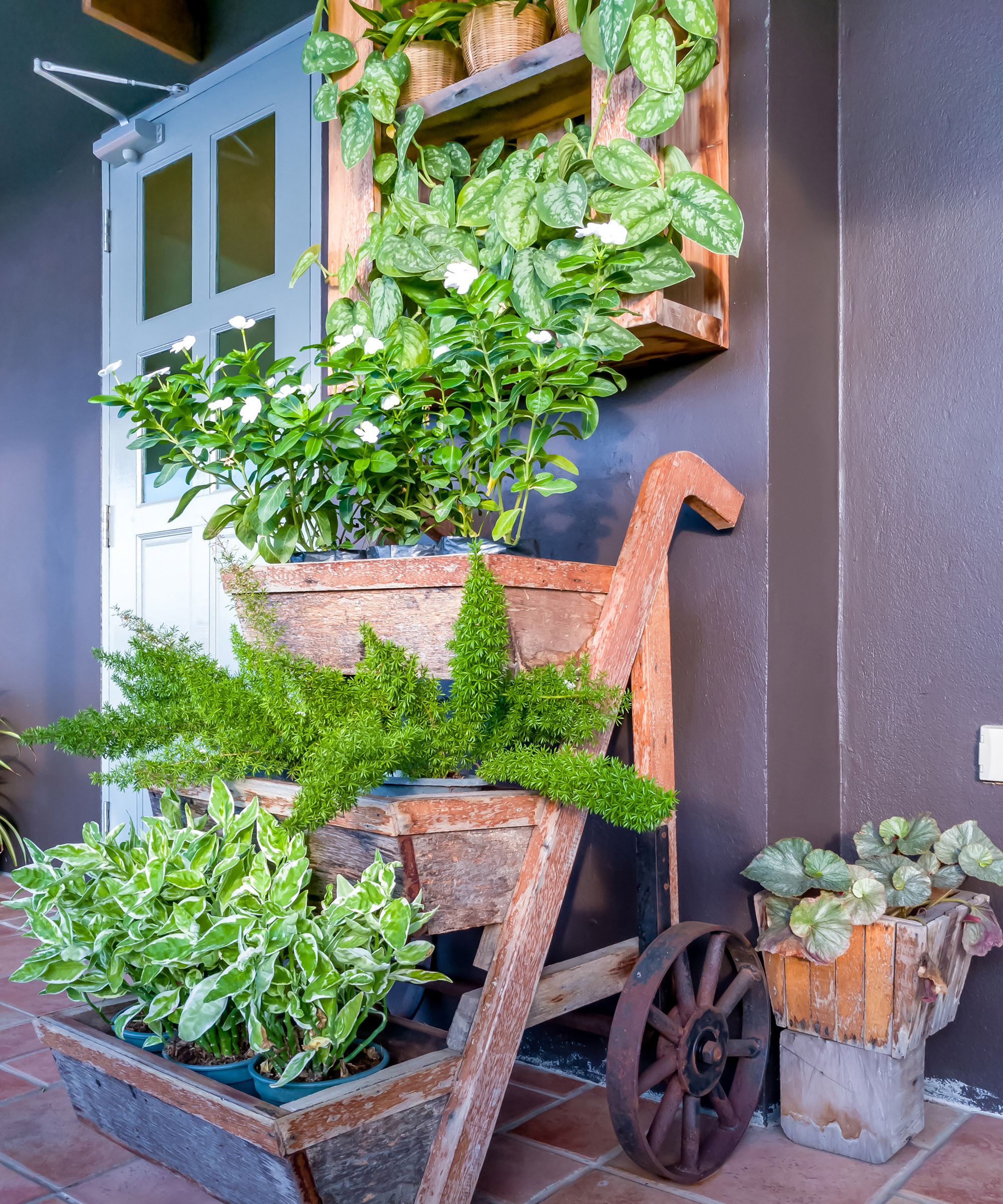
Smarten up your front porch with some vertical planters. Tiered planters are one of the most common vertical garden ideas as there are so many varieties which are readily available. Whether these be brand new from garden centers, or salvaged from flea markets.
If your porch is north facing and therefore in shade for most of the day, this could actually be a bonus. You may not be able to grow sun lovers such as Mediterranean herbs and tumbling tomatoes, but large leafed shade lovers like ferns and ivy will thrive. And given a few months of regular watering they will begin to trail and tumble down your planter, creating a living wall effect.
Why not try fixing a pallet on the wall above it to pack in even more lush foliage? Both of these can be easily moved around or taken with you if you ever move house.
12. Grow a wall of herbs in an outdoor kitchen area
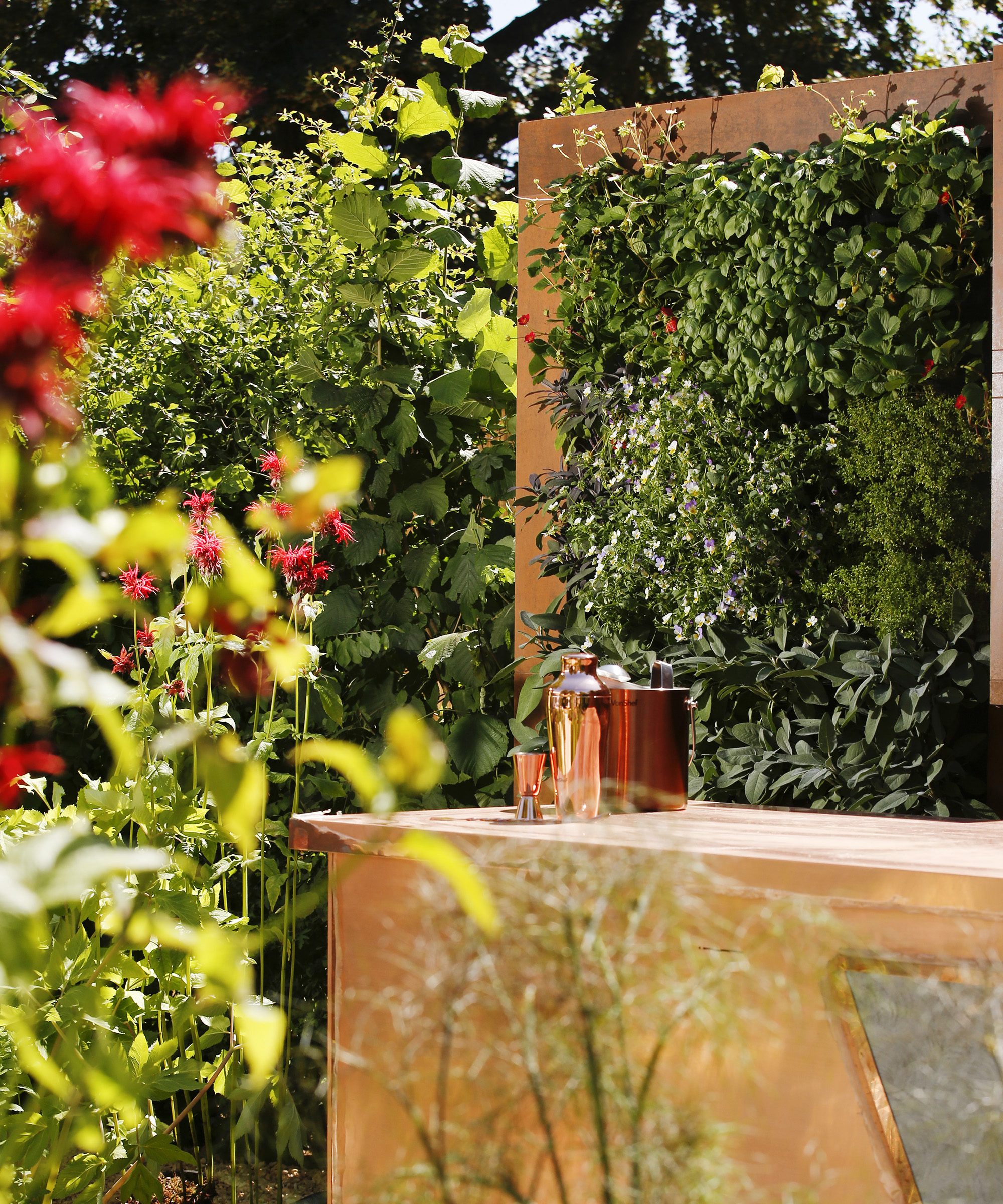
In this garden, designed by Anca Panait, she has created a wall of edible herbs which is positioned in an outdoor kitchen area. Not only is this a visual feast, but also a culinary one. Growing herbs near an outdoor kitchen makes good sense as you will always have flavor to hand to add to your dishes.
Try Mediterranean herbs like oregano and basil. Although basil is an annual herb and will need to be replaced each year, rosemary, mint and sage are perennial and therefore will give a more long lasting display.
What grows well in a vertical garden?
When planning your vertical garden ideas, remember to research and choose plants wisely. The plants you select should be suited to their growing conditions. If your balcony gets a lot of sun then choose sun lovers like clematis and certain rose varieties. Whilst shady spots will favour ivy, nicotiana or jasmine.
If you're just looking for one of the best climbing plants to train up a trellis then go with something quick growing like Virginia creepers or the purple flowering Akebia quinata.
If herbs are the preferred choice we would recommend planting directly from seed as supermarket-bought herbs are not of very good quality and can have diseases or be weak in general. Basil, parsley, sage, mint, thyme, oregano or chives could work well in an indoor kitchen garden.
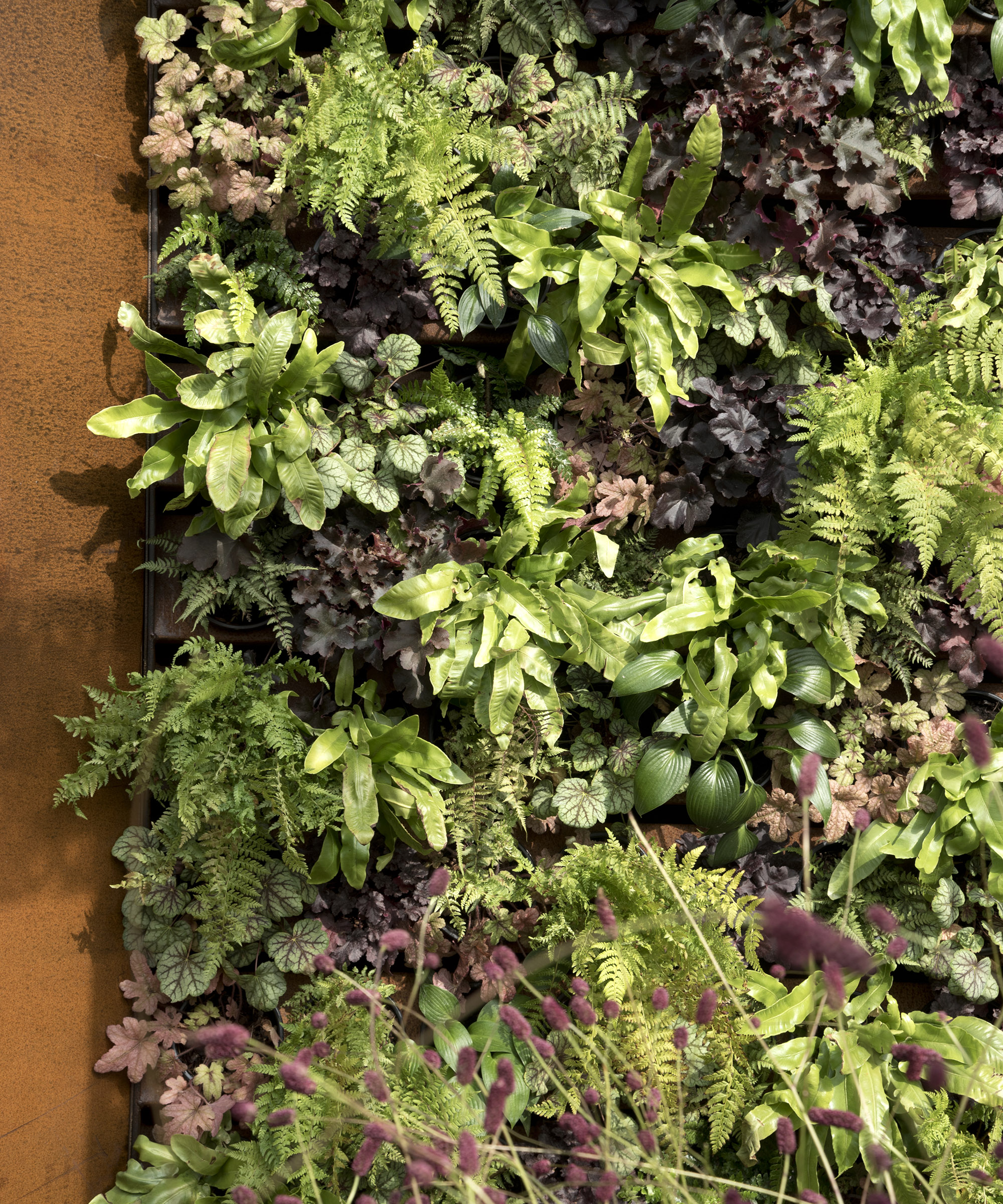
How do you set up a vertical garden?
The first step in creating a vertical garden is deciding the look and aesthetic you want to go for. Luke Dejahang, CEO of Crown Pavilions says: 'Specifically, is your objective to create a small display or dedicate a larger area? First, choose the type of vertical garden you want to use. For instance, hanging wall planters are an easy and affordable way to grow herbs or display small indoor plants.
'Alternatively, you can make DIY displays by purchasing some pots and sturdy rope, or by purchasing shelves and layering. Once you’ve hung your planters or shelves, simply select the plants you want to use and place them in the pots.
'When choosing your plants make sure they are flexible. Because vertical gardens tend to sprawl out, it’s important to select plants that will do the same, rather than fall downward. Additionally, since vertical gardens aren’t able to pull nutrients from different soils around them, good soil is a must to make sure your plants thrive. Lastly, make sure your plants are watered regularly and have fertilizer to get those much-needed nutrients'
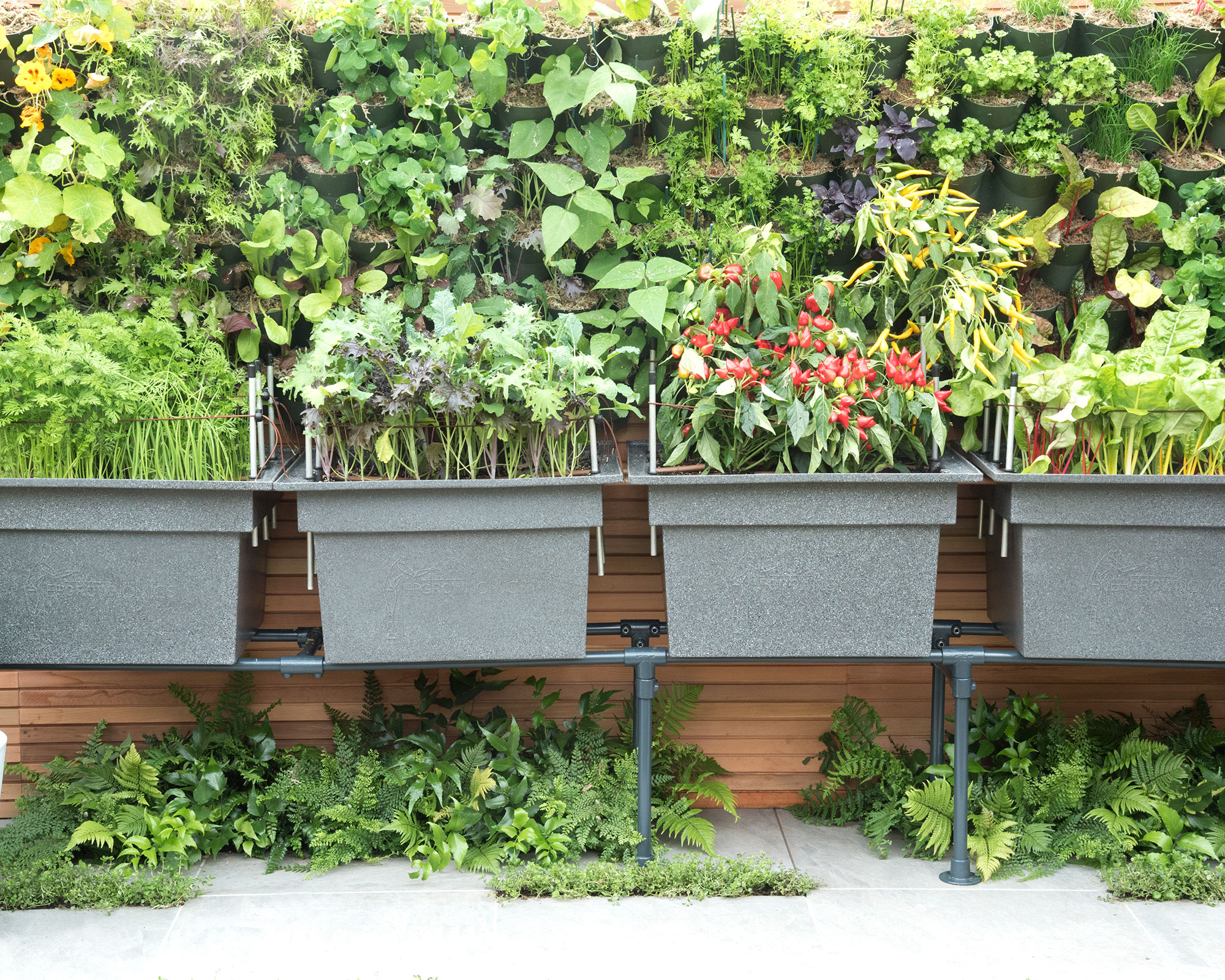
What vegetables can I grow in a vertical garden?
Mark Risdell Smith, author of The Vertical Veg Guide to Container Gardening (available at Amazon), advises 'Hanging basket ideas are ideal for filling in bits of empty space. You can put one anywhere you can fix an attachment to hang one. Fill them with small cherry tomatoes, trailing runner beans, trailing nasturtiums or herbs. Hanging baskets are prone to dry out quickly so use the largest you can find.
Climbing varieties of plants are another way to make the most of vertical space - and look great, too. Good choices for containers include climbing runner and French beans, vining tomatoes, squash, fat baby achocha, blackberries and hardy kiwi.'
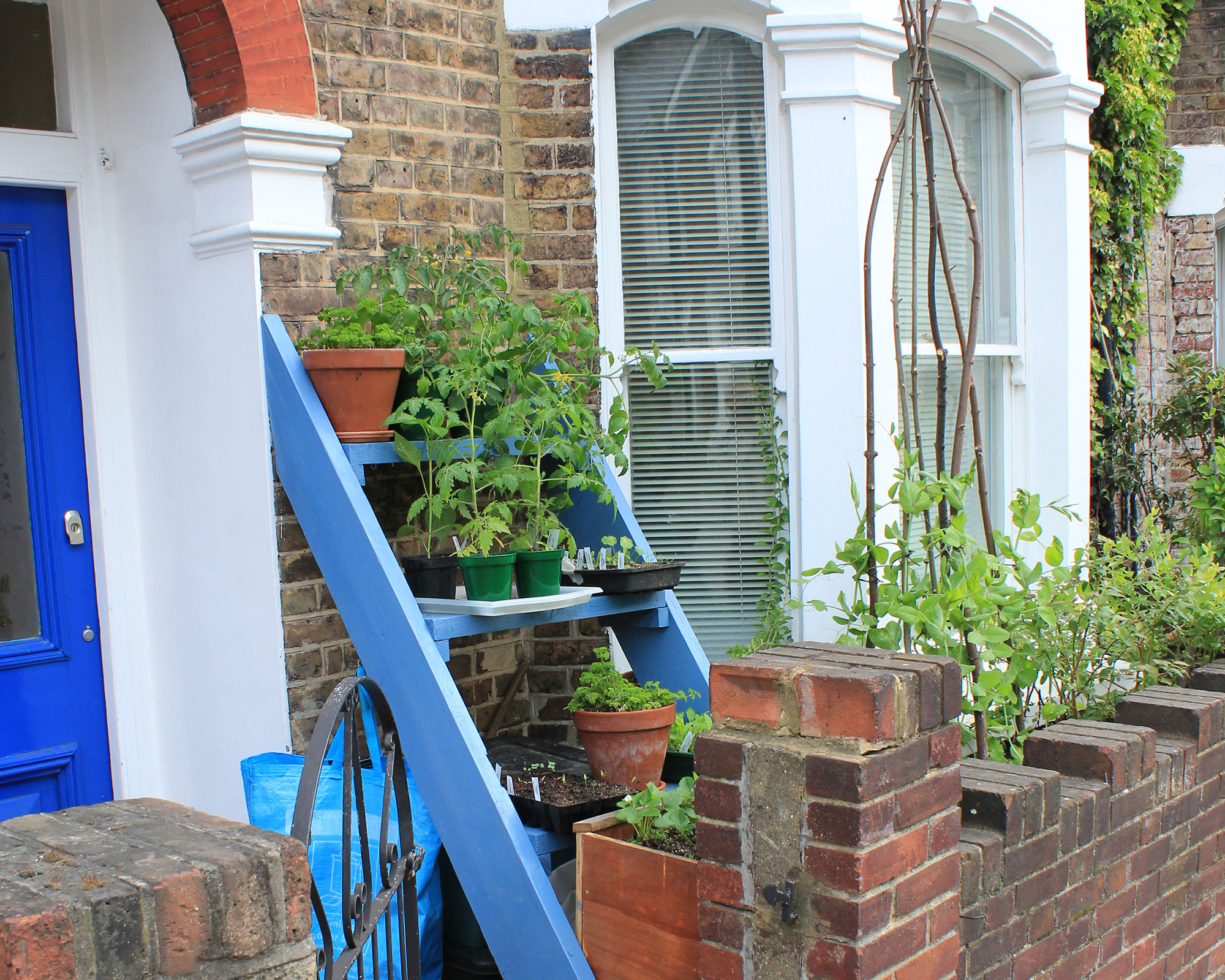

Teresa has worked as an Editor on a number of gardening magazines for three years now. So she is lucky enough to see and write about gardening across all sizes, budgets and abilities. She recently moved into her first home and the garden is a real project! Currently she is relishing planning her own design and planting schemes. What she is most passionate about when it comes to gardening are the positive effects it has on our mental health to grow and care for plants, as well as being great for the environment too and help provide food and shelter for wildlife.
